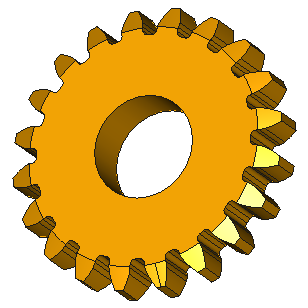AT&T Long Lines “Oak Hill Tower”, San Jose, CA, 2021.
All the pixels, none of the RF exposure, at https://www.flickr.com/photos/mattblaze/51261791084
#photography
@mattblaze@federate.social its called “communication hill” and a lot of housing has been built up there now. San Jose is changing rapidly.
@tragiccommons@infosec.exchange That seems to be a (relatively( new name for it, presumably post-tower. AT&T calls the site “Oak Hill”.
Captured with the Rodenstock 50mm/4.0 HR Digaron-W lens (@ f/4.5) on a Cambo WRS-1600 camera (with about 15mm of vertical shift to preserve the geometry), the Phase One IQ4-150 back (@ ISO 50) in dual exposure mode (which preserves a couple stops of additional dynamic range into the shadows).
The tower’s shape is irregular; it tapers slightly.
The wide angle and panoramic orientation give a bit of context, alone on a hill (which is being rapidly encroached by adjacent residential development).
For much of the 20th century, the backbone of the AT&T “Long Lines” long distance telephone network consisted primarily of terrestrial microwave links (rather than copper or fiber cables). Towers with distinctive KS-15676 “horn” antennas could be seen on hilltops and atop switching center buildings across the US; they were simply part of the American landscape.
Most of the relay towers were simple steel structures. This brutalist concrete platform in San Jose was, I believe, of a unique design.
@mattblaze@federate.social here is a toot about a very technical video tour of the shack at the bottom of one of these sites. The video host is very well informed and does a GREAT job at commenting the visit, with a description of everything
https://chaos.social/@f4grx/113826985021478406
The batteries are impressive, among other things.
@f4grx@chaos.social Neat!
@mattblaze@federate.social I’ve been looking at some of the Alert California cameras around LA (have friends in Northridge) and stumbled across a tower on one of the cameras on Topanga Peak which has a nice view of another one of those Long Lines stations. https://cameras.alertcalifornia.org/?pos=34.0959_-118.5425_12&%3Bid=Axis-TopangaPeak2
The San Jose Oak Hill Tower is unique in a number of ways. This particular concrete brutalist design appears not to have been used anywhere else; it seems to have been site-specific. It sits atop an underground switching center (that was partly used for a military contract), which explains the relatively hardened design.
Today the underground switch is still there, owned by AT&T, but the tower space is leased to land mobile and cellular providers. The old horn antennas at top are disconnected.
With a few exceptions (mostly towers atop downtown switching offices in populated areas), no one was trying to make any of this utilitarian communications infrastructure beautiful. It was form strictly following function, built to be reliable and rugged.
But there was, I think, quite a bit of beauty to find in it. I wonder if we’ll look at our current neighborhood cellular towers, now often regarded as a visual blight, the same way decades after they’re (inevitably) also gone.
@mattblaze@federate.social I do wonder, with the angles of the concrete at the top of the tower, if there was at least some consideration for the aesthetics of the structure
either way, this tower is dope as hell
@mattblaze@federate.social Before BT (in the UK) went to fibre, they had a wide variety of towers for MW backbone/trunk data/voice comms. Many were utilitarian extended metal tetrahedra or trihedra, but some were quite unique - perhaps the most obvious being the former Post Office Tower in London.
Many of them are now shadow of their former selves, with very few antennae attached.
@greem@cyberplace.social I was sad when they removed the antennas from the Post Office Tower (which I understand is being refurbished into a hotel).
@mattblaze@federate.social Apparently so.
It’s a difficult building to get rid of, because the foundation for the tower itself are intertwined with the former telephone exchange beneath it - which is now an incredibly important fibre interchange point.
I was lucky enough to go up there in 2004 (or 2005) for a presentation lunch from Cisco. It’s fascinating inside.
@mattblaze@federate.social The Eiffel Tower was considered among other things, “a wart on the face of Paris.” You never know what people are going to think is nice once they get used to it.
For everyone hating clean lines as “brutalist” there’s someone despising ornamentation as “gingerbread.”
@mattblaze@federate.social
Some cellular towers are made to resemble trees, as I’m sure you’ve noticed. The effect is… not better.
@mattblaze@federate.social there is still a tower with those horn antennas off highway 11 in northern Ontario. There used to be a set where I grew up, but now it’s just a massive tower with a few tiny cell antennas on it. Fiber went through in 1990 and we all got touch tone.
@mattblaze@federate.social
Aww nice! Have you seen the Bell Labs documentary about them?









